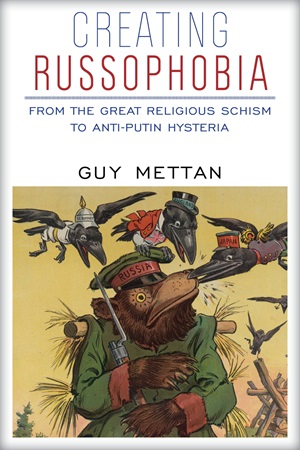There are many, among my circle of friends, who are quick to jump on the “Stand with Ukraine” bandwagon because it is the politically correct thing to do, without trying to understand the undercurrent of the political situation. These people should read Creating Russophobia: From the Great Religious Schism to Anti-Putin Hysteria by Guy Mettan as it presents an in-depth exploration of the historical and geopolitical roots of Western antagonism towards Russia.
Mettan, a Swiss journalist and former editor-in-chief, constructs a detailed narrative that spans centuries, tracing the development of Russophobia from its early origins to the present-day political climate. By starting from the Great Schism between the Eastern Orthodox and Western Catholic Churches, he meticulously outlines how religious, cultural, and ideological differences laid the groundwork for centuries of mistrust and conflict. This historical breadth gives readers a nuanced understanding of the long-standing nature of Western biases against Russia.
Although some parts are convoluted (the writing style doesn’t help), the book is well researched, drawing from a wide array of sources, including historical documents, academic studies, and contemporary political analyses. Mettan’s use of primary and secondary sources lends credibility to his arguments and demonstrates a deep engagement with the topic. The thoroughness and attention to detail is indeed impressive.
The author also does not shy away from making bold claims and challenging mainstream Western narratives about Russia. His arguments are provocative, which will encourage you to question the dominant perspectives propagated by Western media and politicians. By presenting an alternative viewpoint, Mettan fosters critical thinking and debate, which are essential in a balanced understanding of international relations.
However, Mettan’s arguments are sometimes marked by broad generalizations and overstatements. His critique of Western media and political strategies occasionally veers into sweeping indictments that may not fully account for the diversity of opinions and actions within the West.
While the historical analysis is robust, the book’s discussion of contemporary issues, particularly those involving President Vladimir Putin and current geopolitical tensions, can feel less comprehensive.
Despite these drawbacks, Mettan’s work is a significant contribution to the discourse on international relations and media bias, encouraging readers to critically evaluate the narratives they encounter. For those willing to engage with its provocations and insights, Creating Russophobia offers a rich and enlightening journey through the complex history of Western attitudes toward Russia.



